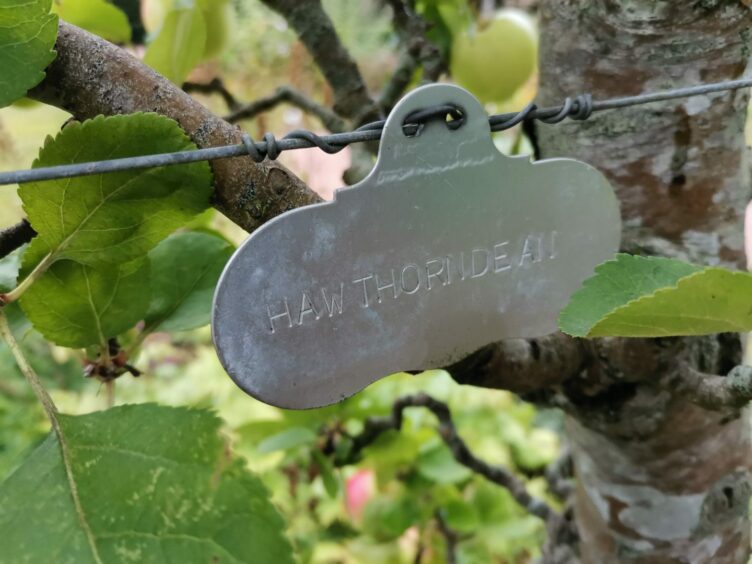“What’s the difference, Potter, between monkshood and wolfsbane?”
Did you know the answer to this? Fear not if you don’t. Plant etymology and nomenclature (yup, fancy name for origins and way of choosing names) is a complex but fascinating subject.
Poor Harry may not know the difference, but imagine if he’d been asked what Aconitum napellus was? If you’re lost then don’t worry.
A certain dour professor clears it up: “As for monkshood and wolfsbane, they are the same plant, which also goes by the name of aconite. Well? Why aren’t you all copying that down?”
Common names
Common names for plants vary you see. What one person calls monkshood, another calls wolfsbane.
Another may call it aconite, more complex yet go abroad and you may find it’s called Blauer Eisenhut in Germany meaning ‘Blue Aconite’ or head to Greece where the name originated and it is called Akone.
Ak meaning pointed and konos meaning cone, referring to the shape of the flowers. All different names but within this whole opening salvo I’ve been talking about the same plant!
Latin ain’t dead!
It is for the very reason that we gardeners use Latin. While it may be a dead language to most, Latin allows us green-fingered lot to communicate about plants globally and concisely.
Carl Linnaeus was an 18th Century Swedish botanist and the father of modern taxonomy.
He was curious enough and dedicated enough to spend a huge portion of his life to creating Systema Naturae, a piece of work which still bears weight even to this day.
Linnaeus created binomial nomenclature which is to say he created the system of plant classification which is used by gardeners worldwide to identify, classify and discuss plants to this very day.
Latin origins
The thing with Latin is, it looks unusual. Yup I said it. It took me a while to get into the swing of it.
I am much more analytically minded and prefer number crunching. Languages have never been my thing.
French at school was ennuyeux. I know you’ll be Googling that now. It’s OK, I would be too.
Latin was only learned by me through forced repetition. When you first learn about plants and their Latin names it pays to first understand how the taxonomic classification system works.
Plant families
It sounds complex but it’s not too bad really. To be brief we can understand that each plant belongs to a family.
Each family name ends in aceae. Don’t ask why, just roll with it. Roses are Rosaceae and asters are Asteraceae. Within family there is genus. In this case rose is Rosa.
Then there is the species to identify which type of rose and example may be rugosa.
Then there is cultivar for example ‘Roseraie de l’Hay’ to even further identify the plant. Any plant that has a cultivar name has been created through human breeding.
Wild plants have only genus and species. It’s a bit like saying for the sake of a car that genus maybe Kia, species maybe sportage and cultivar maybe GT edition. Please note there are no Kias in the wild though (that I know of!).
Latin gives hints
The clever thing once you get into the swing of Latin names is that they actually have a lot of commonalities.
Certain names crop up often and it pays to know what it means as it gives a useful hint as what the origins of the plant is or what its uses are.
I’ll give some examples. With regards to colour: rubra means red, nigra means black, aureas means golden, viridis means green.
What about location? Well sylvatica means of the woods, littoralis means growing by the sea, alpinus means growing in high rocky regions like the Alps. There is also properties like officinalis meaning sold in shops and therefore useful in some human capacity such as a culinary or medicinal.
Sometimes the Latin describes the growing habit like horizontalis as in Cotoneaster horizontalis which describes the low, prostrate growing habit.
There could also be reptans meaning creeping as in Ajuga reptans which is known to slowly spread and smother.
It may even describe shape where cordata means heart shaped as in Tilia cordata the lime or linden tree which has heart-shaped leaves.
Guide books
There is also lungwort which belongs to the genus Pulmonaria. Which if you’ve watched enough medical shows will remember the diagnosis of pulmonary embolism.
Pulmonary, Pulmonaria, lungwort. Ain’t it all just so clever!
Maybe I’m just easily impressed. Impressed or not, knowing some basic Latin will help you understand plants and understand their origins, habits, uses, needs and more. Get cracking with the guidebooks.
Take care and happy gardening.






Conversation